Rie Kamikubo
Beyond Omakase: Designing Shared Control for Navigation Robots with Blind People
Mar 31, 2025Abstract:Autonomous navigation robots can increase the independence of blind people but often limit user control, following what is called in Japanese an "omakase" approach where decisions are left to the robot. This research investigates ways to enhance user control in social robot navigation, based on two studies conducted with blind participants. The first study, involving structured interviews (N=14), identified crowded spaces as key areas with significant social challenges. The second study (N=13) explored navigation tasks with an autonomous robot in these environments and identified design strategies across different modes of autonomy. Participants preferred an active role, termed the "boss" mode, where they managed crowd interactions, while the "monitor" mode helped them assess the environment, negotiate movements, and interact with the robot. These findings highlight the importance of shared control and user involvement for blind users, offering valuable insights for designing future social navigation robots.
AccessShare: Co-designing Data Access and Sharing with Blind People
Jul 27, 2024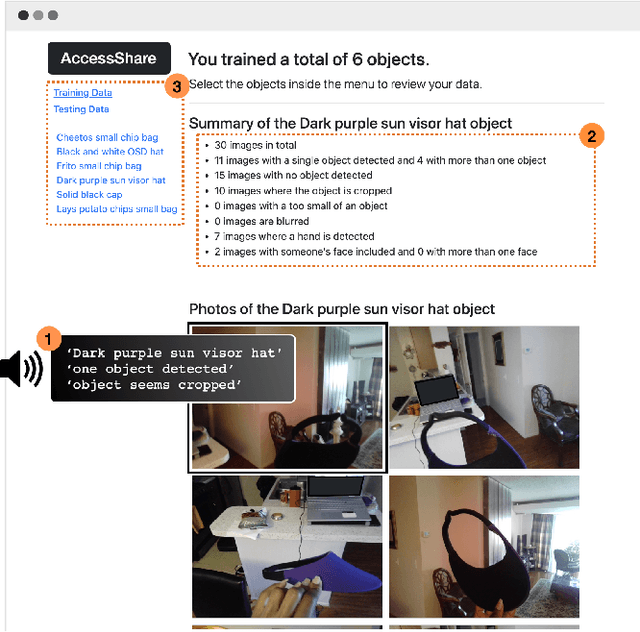
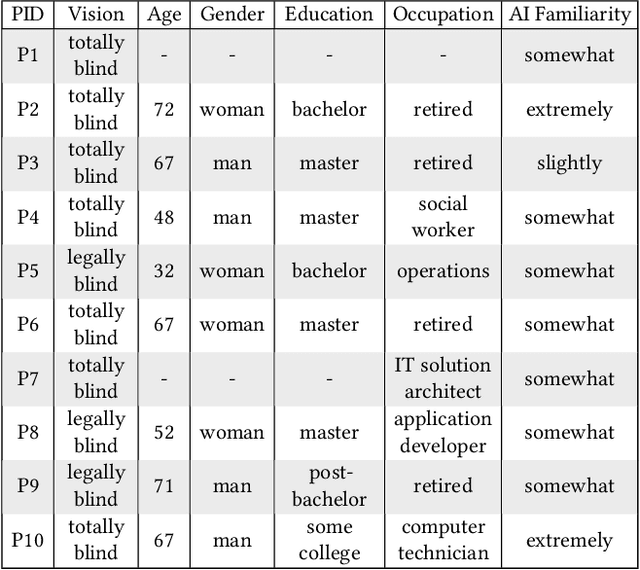
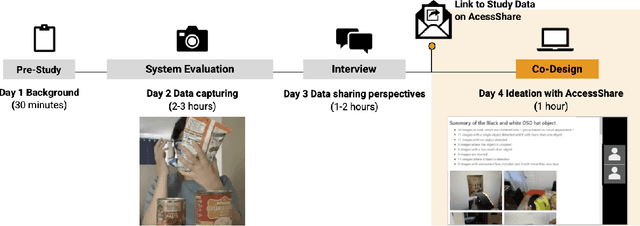
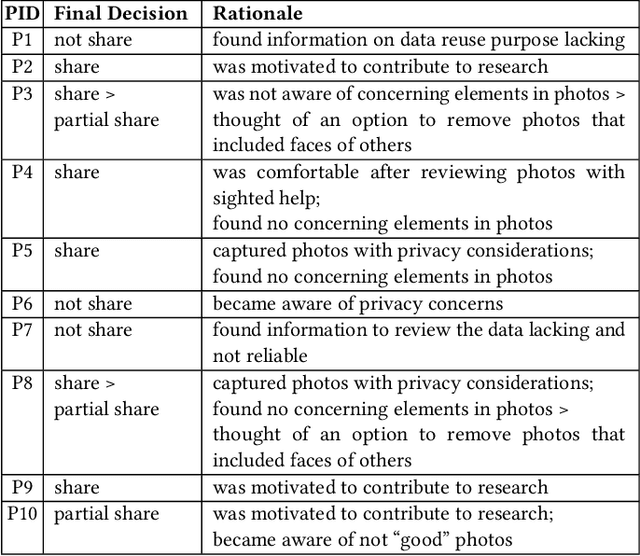
Abstract:Blind people are often called to contribute image data to datasets for AI innovation with the hope for future accessibility and inclusion. Yet, the visual inspection of the contributed images is inaccessible. To this day, we lack mechanisms for data inspection and control that are accessible to the blind community. To address this gap, we engage 10 blind participants in a scenario where they wear smartglasses and collect image data using an AI-infused application in their homes. We also engineer a design probe, a novel data access interface called AccessShare, and conduct a co-design study to discuss participants' needs, preferences, and ideas on consent, data inspection, and control. Our findings reveal the impact of interactive informed consent and the complementary role of data inspection systems such as AccessShare in facilitating communication between data stewards and blind data contributors. We discuss how key insights can guide future informed consent and data control to promote inclusive and responsible data practices in AI.
"We are at the mercy of others' opinion": Supporting Blind People in Recreational Window Shopping with AI-infused Technology
May 10, 2024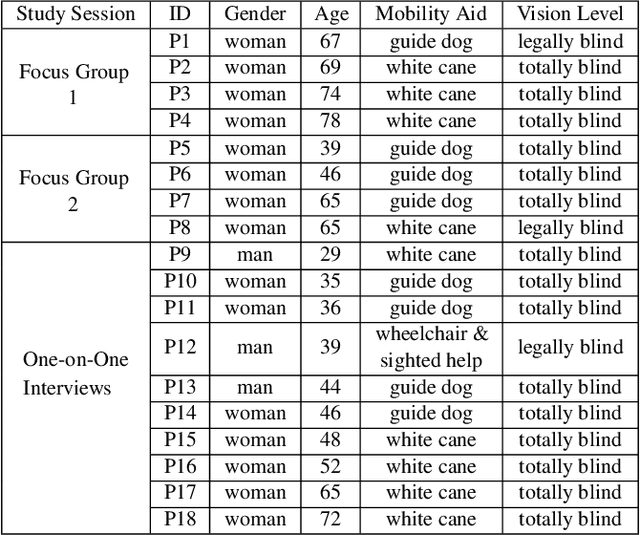
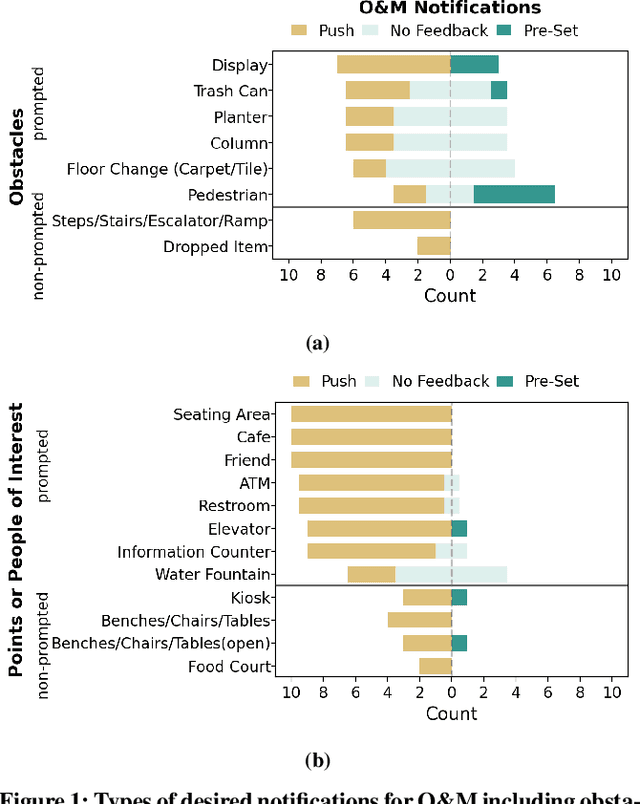
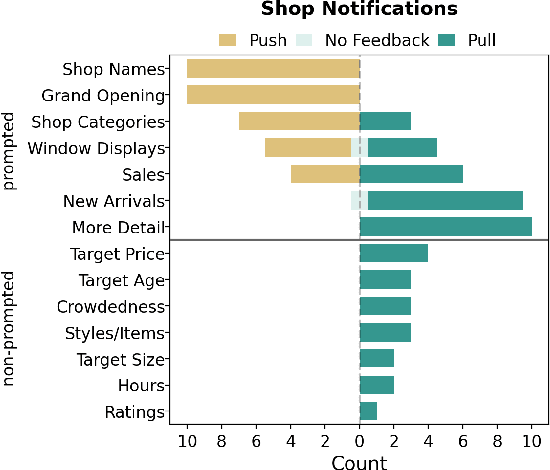
Abstract:Engaging in recreational activities in public spaces poses challenges for blind people, often involving dependency on sighted help. Window shopping is a key recreational activity that remains inaccessible. In this paper, we investigate the information needs, challenges, and current approaches blind people have to recreational window shopping to inform the design of existing wayfinding and navigation technology for supporting blind shoppers in exploration and serendipitous discovery. We conduct a formative study with a total of 18 blind participants that include both focus groups (N=8) and interviews for requirements analysis (N=10). We find that there is a desire for push notifications of promotional information and pull notifications about shops of interest such as the targeted audience of a brand. Information about obstacles and points-of-interest required customization depending on one's mobility aid as well as presence of a crowd, children, and wheelchair users. We translate these findings into specific information modalities and rendering in the context of two existing AI-infused assistive applications: NavCog (a turn-by-turn navigation app) and Cabot (a navigation robot).
Data Representativeness in Accessibility Datasets: A Meta-Analysis
Jul 16, 2022



Abstract:As data-driven systems are increasingly deployed at scale, ethical concerns have arisen around unfair and discriminatory outcomes for historically marginalized groups that are underrepresented in training data. In response, work around AI fairness and inclusion has called for datasets that are representative of various demographic groups.In this paper, we contribute an analysis of the representativeness of age, gender, and race & ethnicity in accessibility datasets - datasets sourced from people with disabilities and older adults - that can potentially play an important role in mitigating bias for inclusive AI-infused applications. We examine the current state of representation within datasets sourced by people with disabilities by reviewing publicly-available information of 190 datasets, we call these accessibility datasets. We find that accessibility datasets represent diverse ages, but have gender and race representation gaps. Additionally, we investigate how the sensitive and complex nature of demographic variables makes classification difficult and inconsistent (e.g., gender, race & ethnicity), with the source of labeling often unknown. By reflecting on the current challenges and opportunities for representation of disabled data contributors, we hope our effort expands the space of possibility for greater inclusion of marginalized communities in AI-infused systems.
 Add to Chrome
Add to Chrome Add to Firefox
Add to Firefox Add to Edge
Add to Edge